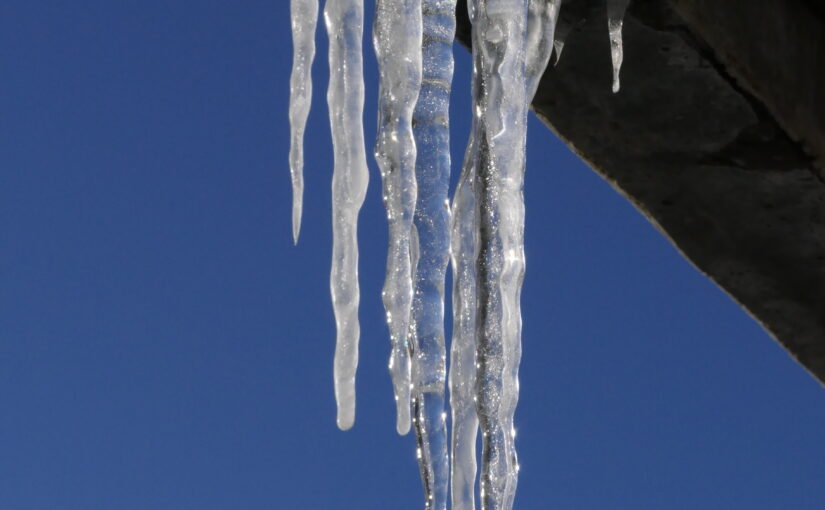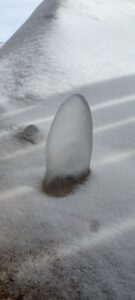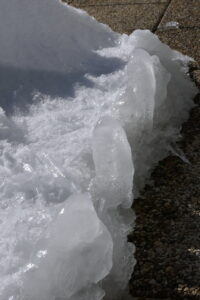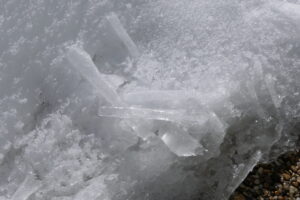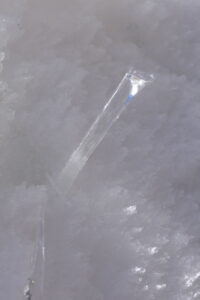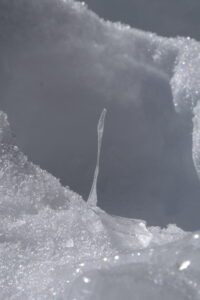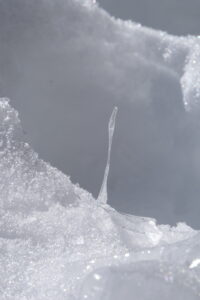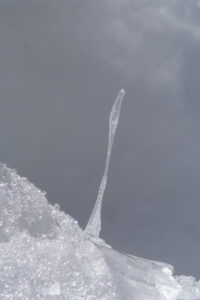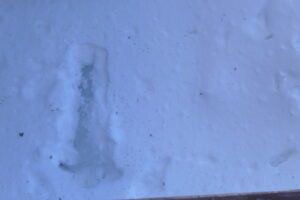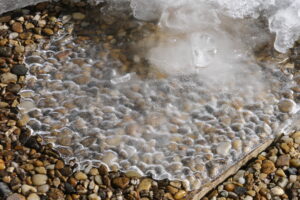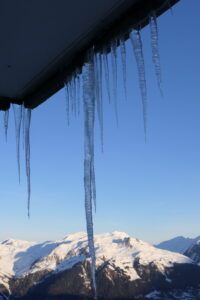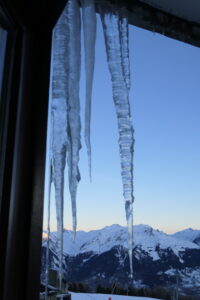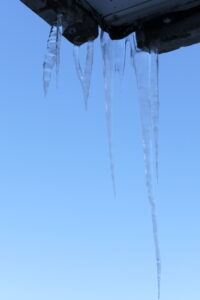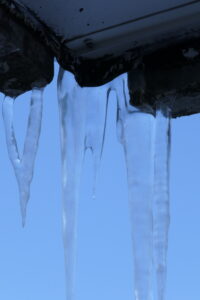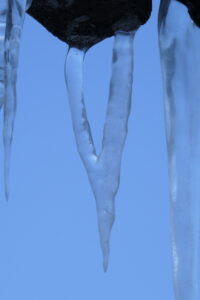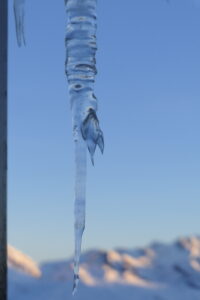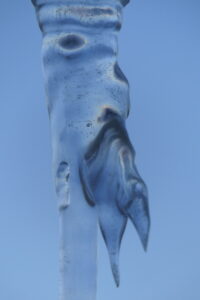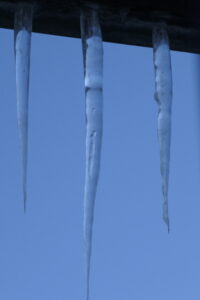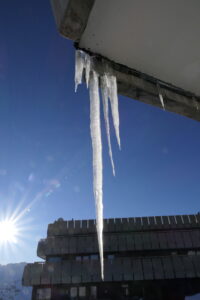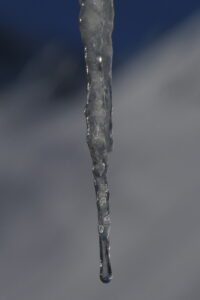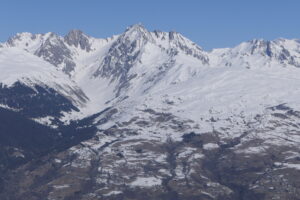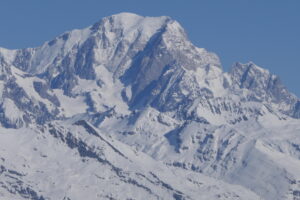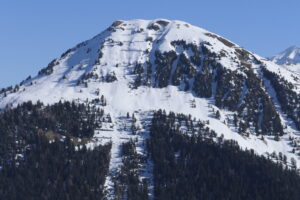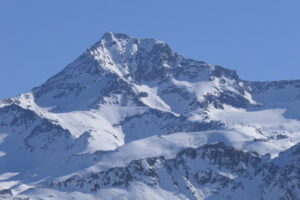Created 13.ii.22.
I’ve written about icicles here before Icicles, snow and freedom. That was back in December 2019, before we knew coronavirus was about to hit us and the icicles in question were linked in with some not very well written musings about freedom. I see that, despite a global pandemic, my mind returns to similar themes. However, tonight I’ll make this mostly about the icicles and their life cycles.
I was amused when I arrived here with J, back on 31.i.22, to find this outside the windows at the end of the corridor, just outside our apartment. As ever, click on this to get the full sized image.
It’s an icicle, or ice, stalagmite and I’m not aware of ever having seen one before. It reminded us of Indian lingam and turning to my beloved Wikipedia for that link took me to the amazing Shiva lingam of the Amarnath temple which is a bit bigger than this one (about 12 cm high!) but still an ice stalagmite lingam. That one has an annual pilgrimage, and terrorists killing pilgrims so perhaps I should be happy that my own little ice lingam stalagmite is small.
It was a shock to read my post of over two years ago and find that my fascination with the physics of icicles is little changed and that the formations are very similar. Hm, perhaps it’s not very surprising that neither has changed! Anyway, one thing I have realised this time around is that I have two very distinct sets of icicles up here: the ones straight ahead out of the main window, facing (roughly) north, and the ones hanging off the balcony above on the side of the living room to the right of that window, over the terrace we share with three other apartments. Because the first ones get I think less than an hour of direct sun in the morning, and are in effect on a cold cliff of concrete, they can and do survive days and in winter they can die by becoming too big to carry their own weight, or because someone comes and knocks them off to prevent them falling and killing someone.
By contrast the ones facing the terrace get direct sun for most of the day if there is direct sun. Even more importantly for their life expectancies, they hang off over a wall of the brown wood facing of our apartment which catches the sun and gets frankly hot if there is little or no cloud. That must create a strong upward convection current of warm air sweeping up and around the icicles … and melting them rapidly. Here are three images of the corpses (and some smaller lingams/stalagmites).
I particularly liked this defiant but doomed fellow.
I think that’s an icicle that has turned a near perfect 180 degrees as it fell leaving its former lower tail sticking up from the snow around it … until it will, inexorably succumb. (I will check on it tomorrow but I’m sure it will have gone, not started to accreted falling drops to itself to become another lingam: it’s not sufficiently directly below a drippy point.)
Here though is the corpse of the largest icicle that had grown over some days outside the main window. It fell with a bang that startled both of us onto the balcony below.
Hard to tell from that ‘photo (and it was cold and hard enough leaning out to get that!) but that’s several kilos of ice half immured in the snow a good three metres below.
And here’s one last icicle corpse form, or perhaps it’s a way ice stalagmites start. I call these “ice jellyfish”. They happen when ice/water is on the tiles on the terrace edge. I suspect they start with a fallen icicle and drips following it as the tile is just getting above zero centrigrade.
So that’s it, no musings on freedoms and the sad state of the world, nor of the sad state of, and life cycles, of my musings tonight. I’ll just leave you with a gallery of icicles.
And a couple of views beyond swinging left to right, across the valley, Mont Blanc in the distance, Mont St. Jacques just across our little tributory valley and the Sommet de Bellecote.
